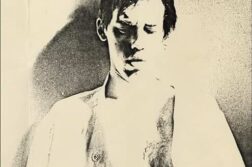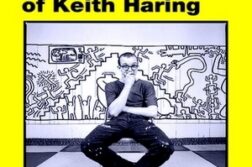Warhol by the Book
Williams College Museum of Art
March 7 to August 16, 2015
AN EXHIBITION that ran this past summer at the Williams College Museum of Art, War-hol By the Book, was quite remarkable both for the sheer beauty of its objects and for revealing a side of Warhol that, amazingly, had never been shown before. The show certainly opened my eyes to new ways of understanding and interpreting Warhol’s art. The exhibit showcased almost 100 books, from crime novels to popular fiction, from children’s books to textbooks, to which Warhol made an artistic contribution.
His most productive period in this genre occurred while he was making his living as a graphic artist. Directly related to his shoe illustrations for I. Magnin is the charming A la Recherche du Shoe Perdu (1955), in which each shoe is given a tag line by the openly gay poet Ralph Pomeroy. A particular standout is titled “The Autobiography of Alice B. Shoe.” (One of Warhol’s blotted line drawings depicts Pomeroy with a heart almost vibrating in the margin of the illustration, and the notation “Ralph P X me.”) Perhaps the most luxurious book is 1957’s A Gold Book, produced when Warhol was still transitioning from commercial to fine art. Printed in an edition of 100 and based on photographs, it included line drawings of shoes, bags, and handsome men. Gold would, of course, reappear in his famed 1962 silkscreen, Gold Marilyn Monroe.







